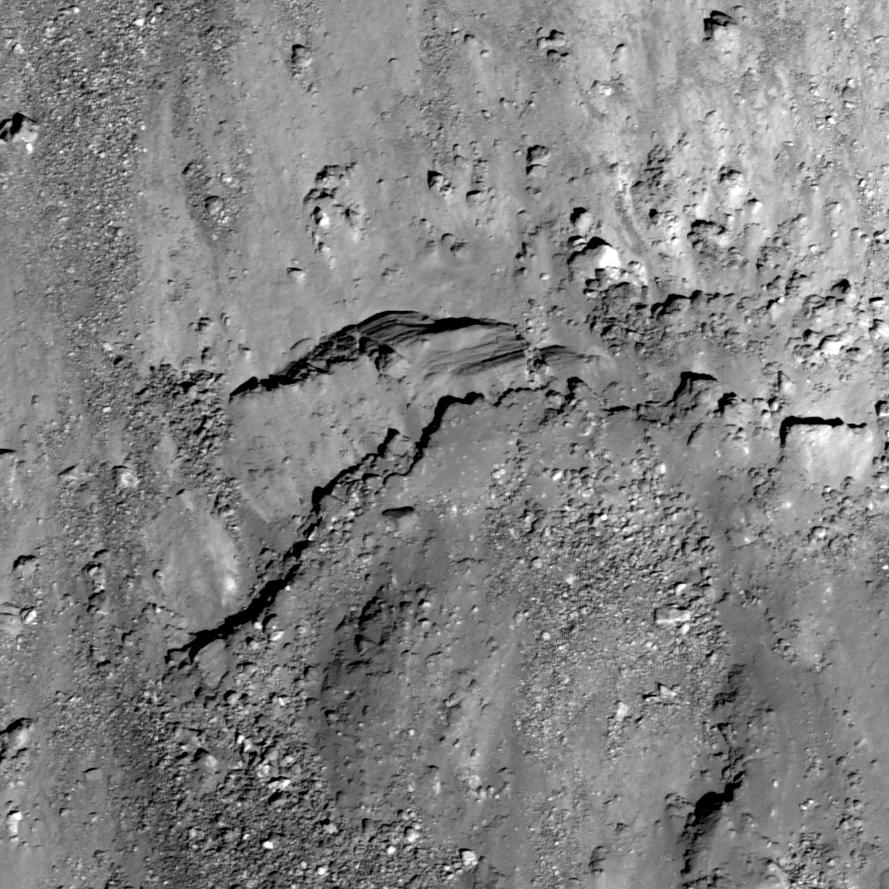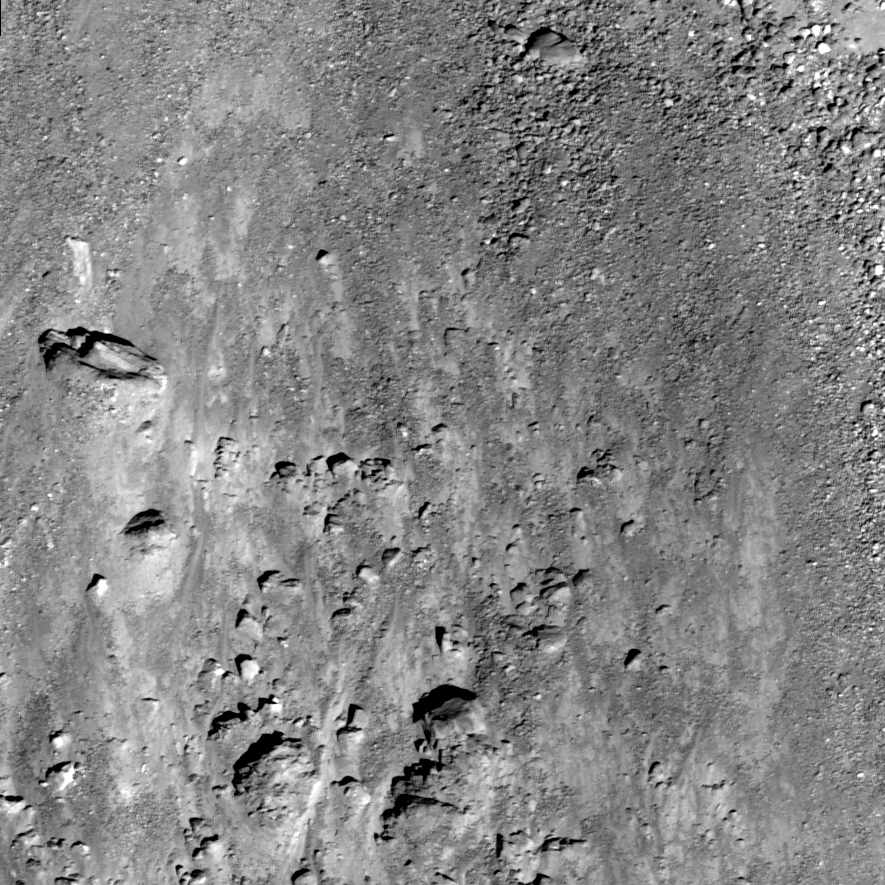
An unnamed, young Copernican crater (about 8.6 km in diameter) northeast of crater Meshcherskiy, has a diverse collection of impact ejecta features. In today's featured image we see evidence for stratified materials in the ejecta blanket of the crater. This particular block, about 170 meters across (approximately two football fields long), might have formed through the impact process, or perhaps the stratified layers are consolidated (compressed) regolith. During an impact, material is thrown out of the crater cavity in sheets of material called ejecta. With the right conditions, the sheets of ejecta could form the layers of the block seen here. It is also possible that the layered material existed before the impact. The simplest explanation is that the layers we see here are actually linear stress fractures in a continuous block, due to the strength properties of the rock. Can you find similar layered rocks in other NAC images elsewhere on the Moon?
Browse the rest of the ejecta blanket in the NAC frame.
Related Posts: Recent Impact, Impact Melt Flows on Giordano Bruno
Published by Sarah Braden on 1 February 2011
